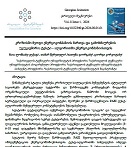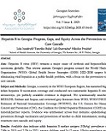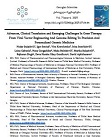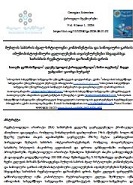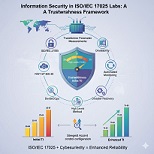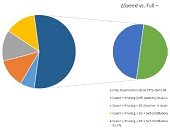Analyzing the Behavior of PI Section and T Section High Voltage Line Models in Harmonic Load Flow
Downloads
The considerable increase in the number of devices equipped with power electronic interfaces in electrical power systems highlights the escalating importance of conducting detailed studies on harmonic load flow in high voltage networks. This area of study diverges from classical power flow analysis as it encompasses the analysis of a full spectrum of currents and voltages of different frequencies. This complex scenario necessitates the accurate representation of the electrical system's components, making the selection of suitable equivalent models critical. When calculating steady state scenarios for fundamental frequency currents and voltages, simplified models can yield relatively high accuracy. However, the scenario becomes significantly more complex with harmonic load flow analysis. This increased complexity is due to the capacitive and inductive components of the network's topological elements being highly sensitive to frequency variations. In conventional load flow scenarios, employing simplified models with lumped parameters for high-voltage lines is generally acceptable. This approach works because the critical parameters at both ends of the line can be accurately determined, and the electromagnetic processes occurring along the line are not the main focus in steady state conditions. However, even though most modern modeling and simulation software capable of harmonic domain analysis can perform harmonic analysis using these simplified models, meticulous validation of these models is crucial. Inaccurate models can lead to results that are not just imprecise but also grossly disconnected from reality, increasing the risk of errors. This caution is especially important when designing harmonic filters and implementing various strategies to mitigate harmonic injections into the network. The article examines how two types of models for high-voltage lines, specifically the "PI" and "T" type models, behave in scenarios involving high-frequency harmonic load flow. This analysis uses a small-scale high-voltage system with 500 and 200 kV nodes as an example. A static generator, providing both harmonic current injections and voltage regulation at the connection point, is used as a source. The network's frequency characteristics are assessed in two scenarios. In the first, the high-voltage network is represented using a classical, lumped-parameter "PI" type model, while in the second, a distributed-parameter "T" type model is applied. The models for other network elements remain unchanged across the scenarios. The outcomes of the harmonic flow distribution in identical scenarios modeled for both cases are compared, leading to a conclusion and recommendation on choosing the appropriate high voltage line model for harmonic load flow calculations.
Downloads
Copyright (c) 2023 GEORGIAN SCIENTISTS

This work is licensed under a Creative Commons Attribution-NonCommercial-NoDerivatives 4.0 International License.


















































